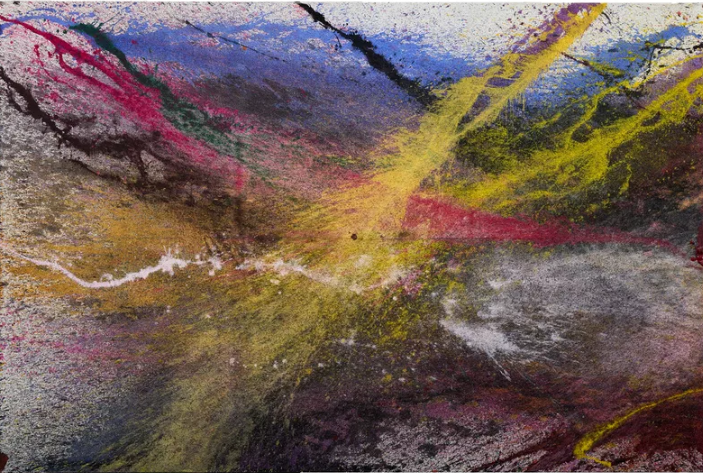
Hermann Nitsch Schüttbild, 2021
The art world’s changing fast. With new tech popping up, shifting global economies, and evolving cultural values, the way we create, buy, and experience art is going through a major transformation. So, what’s really shaking things up in the global art scene today?
Recently, there’s an episode of The Art Business podcast, experts from Sotheby’s Institute of Art, David Bellingham, Melanie Fasche, Marina Maximova, and Oliver Petersen Gilbert—shared the top five trends driving change in the contemporary art market.
1. Digital Art & AI Are Taking Over
From AI-generated art to blockchain-backed NFTs, tech is changing how art is made, sold, and valued. While the NFT craze peaked in 2021–22, institutions are now catching up—starting to document and connect digital art to the broader contemporary art scene.
“Blockchain helps us verify and trace the history of digital works that exist only online,” Fasche said.
As digital platforms grow, artists no longer need to rely solely on galleries—they’re connecting with global audiences in totally new ways.
2. Art as an Investment
Art isn’t just for walls anymore—it’s for portfolios. More people are treating art like stocks or real estate. Concepts like fractional ownership (where people buy shares of an artwork) are making high-value pieces more accessible.
“Speculation is shifting how we see and value art,” said Petersen Gilbert. “It’s becoming more of a financial asset than a purely cultural one.”
This raises big questions: Is art still about culture and meaning, or just a way to make money?
3. The Global Art Market Is Getting More Diverse
Big players like New York and London still lead, but regions like Central Asia and the Caucasus are gaining serious momentum. Local and international interest in these emerging art scenes is growing fast.
“There’s more visibility and demand for artists from places like the former Soviet countries,” Fasche noted.
Bottom line: the art world is becoming more decentralized and inclusive.
4. Private Collectors Are Calling the Shots
Today, private collectors drive about 80% of art sales. They don’t just buy art—they influence what’s shown in galleries, who gets featured, and which artists rise to the top.
“Private money is reshaping the entire cultural sector,” said Petersen Gilbert. “It affects what gets funded, who gets exposure, and how art trends evolve.”
5. Sustainability Is a Growing Concern
Artists and institutions are starting to think more critically about their environmental impact—whether it’s materials used or the energy demands of digital platforms and NFTs.
“Blockchain tech can use a lot of energy,” said Maximova. “That’s sparked some backlash despite the promise digital art holds.”
As climate concerns grow, expect sustainability to play a bigger role in how art is produced and exhibited.
Whether you’re an artist, collector, or just curious about where the art world is heading, these trends are shaping the future of how we create, experience, and invest in art.
